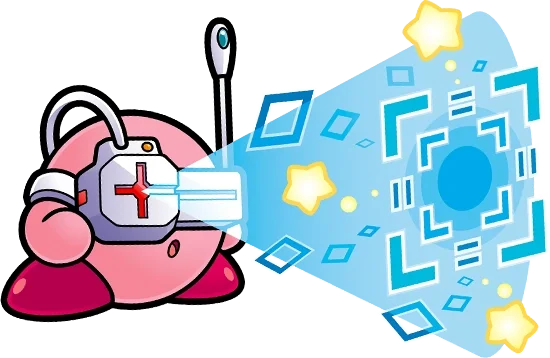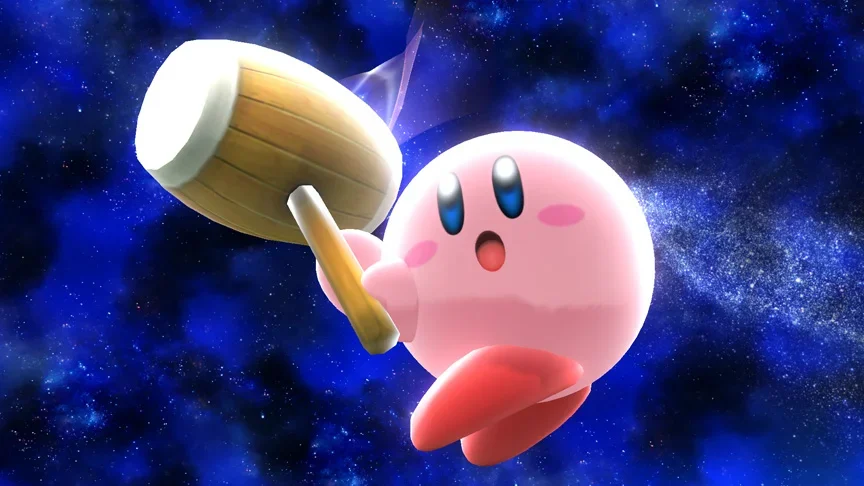
Since the early 1990s, Kirby has been a beloved part of the Nintendo family. What seems like a simple, cute pink character is actually incredibly versatile and easy to pick up. Over many games, Kirby has demonstrated gameplay that’s perfect for beginners, but also offers depth for experienced players, speedrunners, and those who enjoy finding clever solutions. Beyond the gameplay, the world of Kirby is filled with a rich history, memorable characters, and fantastic music that both longtime fans and newcomers can enjoy.
As a long-time Kirby fan, it’s amazing to see how the games have evolved! From the simple charm of the original Game Boy title to the more complex 3D adventures, each game has really used the technology available to it. But what’s *always* stayed consistent – and what I love – is how clear and easy the games are to pick up and play, with controls that just *feel* right. And of course, Kirby’s copy abilities aren’t just for fighting; they change how you explore the levels too! It’s clear a lot of thought and skill goes into making these games, whether you’re looking at the game design itself or even things like the anime!
The Copy Ability System

Kirby’s Copy Ability lets players swallow enemies and instantly gain their powers, changing how Kirby fights and moves. This feature has been a core part of the series since the beginning and has grown more complex over time. Abilities like Sword, Fire, and Hammer completely alter Kirby’s attacks and even how he gets around, making each level a chance to try new things. Different versions of these abilities, like combining elements or using special hats, create even more variety in terms of attack range, power, and usefulness.
Kirby games build upon a core system by adding unique abilities – like combining powers in Kirby 64, using robot parts in Planet Robobot, and the Mouthful Mode in Kirby and the Forgotten Land. These abilities create new ways to solve puzzles in the game’s environments. Developers often put enemies and obstacles in levels to make players switch between abilities, teaching them strategies like blocking attacks with the Sword ability or using Fire to light fuses and discover secret areas.
Inhale, Star Spitting, and Environmental Interactions

Kirby’s signature inhale isn’t just an animation – it’s built on realistic physics and is central to everything he does, from fighting to navigating levels and solving puzzles. He can suck up enemies and objects, and players then choose to either absorb them for new powers or launch them as stars. Even when there’s no useful power to gain, spitting stars is a dependable way to attack, as they always travel at the same speed and with predictable force.
Game levels use objects like blocks, keys, and bombs that always react the same way when something touches them. Game designers use this predictable behavior to teach players how things work without using instructions. For example, players can learn that metal blocks are tough until they figure out a special way to break them, or that getting across moving platforms needs careful timing, not just strength.
Warp Star, Hovering, and Mobility Design

Kirby can move in a lot of fun ways, including floating, short bursts of flight, sliding, and using the Warp Star for super-speedy travel. His floating ability gives players a good amount of time to recover from mistakes, making the game less frustrating. Level design and wind effects encourage skillful platforming instead of relying on floating constantly. The Warp Star isn’t just for getting around quickly; it also adds a dramatic flair to stages, highlighting their design and creating a sense of momentum.
Recent games have combined advanced movement options with character abilities – like quick boosts, speed-enhancing wheels, and tunneling drills – allowing players to customize how they navigate levels. Dedicated time-trial challenges, dynamic level elements, and optional, difficult doors further test a player’s skills with these movements, often under pressure from time limits or other constraints.
Super Smash Bros. Cross-Series Presence

In Super Smash Bros., Kirby’s gameplay focuses on his signature abilities: inhaling opponents and copying their moves. This lets him gain access to a variety of special attacks and change how fights play out. He’s also very mobile, with a unique crouch, multiple jumps, and a strong ability to recover from being knocked off the stage, all of which help him control the edges of the arena. Finally, Kirby has powerful but risky moves like turning into stone or wielding a hammer, abilities that come straight from his classic platforming games.
Levels and music from the Kirby series bring familiar gameplay elements—like stage designs, obstacles, and mixed-up songs—to a wider audience, introducing them to what makes Kirby unique. This appearance in different games helps keep the characters recognizable, demonstrating how key actions like breathing in, jumping, and changing shape can be adapted to new situations while still remaining clear and understandable.
Visual Experiments: Yarn, Clay, Mechs, and Full 3D

Each new Kirby game has a unique visual style that directly supports how the game is played. For example, *Kirby’s Epic Yarn* uses a fabric-like look with threads you can pull to create platforms, while *Kirby and the Rainbow Curse* features a claymation style where you draw paths for Kirby. *Planet Robobot* introduces mechanical upgrades that change Kirby’s abilities, and *Kirby and the Forgotten Land* brings the series into fully 3D. These aren’t just cosmetic changes; the art style and gameplay are closely connected.
The game’s visual design cleverly maintains clarity even with different art styles. Character shapes, bold outlines, and clear visual effects make it easy to understand enemy attacks and how to interact with objects. Details like texture quality, shading, and camera angles are carefully adjusted to make important items and pathways instantly noticeable, even for younger players.
Music and Sound Design

Kirby games are known for their music, which combines ear-catching melodies with energetic background tracks that set the speed and feeling of each level. HAL Laboratory’s composers create tunes that are easy to remember and then cleverly reuse them throughout the series to highlight important story moments—like when you meet Meta Knight, face a tough boss, or discover a surprising plot twist. This allows longtime players to instantly understand what’s happening just by listening to the music. Sound effects, such as Kirby’s inhale and the sounds of his abilities, are designed to be clear and noticeable even during fast-paced action, letting players know exactly what’s changing.
The music adapts to each game’s style: handheld versions use simple, clear sounds reminiscent of older game consoles due to technical limitations, while newer versions feature richer orchestral and electronic music that doesn’t overwhelm the gameplay. Many challenging levels use repeating musical loops to help players focus during fast-paced puzzles and tricky sections.
Recurring Rivalries and Character Roles

King Dedede and Meta Knight often appear as rivals with unique fighting styles. King Dedede’s attacks with his hammer and his ability to inhale opponents are similar to Kirby’s, leading to battles that teach players how to react and position themselves effectively. Meta Knight, on the other hand, is fast and uses many quick attacks, and his fights often test players’ ability to recognize patterns and time their defenses, linking story moments with gameplay challenges.
Characters who assist Kirby, like different types of Waddle Dee and Bandana Waddle Dee, show players how to work together. When playing with others, Bandana Waddle Dee’s spear offers unique abilities that pair well with Kirby’s versatile moves, proving that characters with specific skills can work effectively alongside those who are more adaptable in battles and against bosses.
Level Architecture and Optional Challenges

Kirby levels are often designed with multiple paths and secrets – like hidden doors and areas you can only reach by collecting items – to give players reasons to revisit them without getting stuck. Finding things like Energy Spheres, Sun Stones, or rescuing Waddle Dees encourages players to explore carefully, try out different abilities, and master the timing of their actions. The game also features different versions of bosses and extra bosses that keep things interesting by changing their attacks and making the battles more challenging.
Challenge rooms focus on helping players perfect specific moves. They test your skills against the clock or with scoring goals, and keep track of your progress with rewards like medals or best times. The levels cleverly use visual cues—like chains of bombs, burning candles, and enemy arrangements—to guide you towards the fastest and highest-scoring path, turning practice into a fun, competitive experience.
HAL Laboratory and Design Philosophy

Kirby was created at HAL Laboratory with a focus on being easy to understand, forgiving, and immediately enjoyable, while still offering depth for experienced players. Design choices like its circular shape, bold colors, and large expressions were made to ensure the character was clear even on small or older screens. Simple controls and easy-to-learn abilities allow new players to quickly pick up and play without needing to master complicated moves.
Later installments continued to focus on simple, fun gameplay while improving the technology to take advantage of new hardware. This included features like smoother movement, helpful camera tools, and options to make the game easier or allow for cooperative play. This approach created a solid foundation that was easy to learn but also allowed dedicated players to enjoy challenging modes, compete for high scores, and create thriving speedrunning communities.
‘Kirby: Right Back at Ya!’ (2001–2003)

The anime series broadened the scope of the franchise by adding familiar storylines, writing tailored to the show, and giving characters more depth beyond what was seen in the games. Episodes explored the lives of Dream Land’s residents, explained the role of Nightmares as villains, and showed how characters like King Dedede and Meta Knight felt and acted, giving insight into their reasons for doing what they did. This created a rich backstory that future games could then reference through things like conversations, character movements, and level designs.
So, the show really took off, running for a bunch of seasons on TV and then getting translated for audiences all over the world. What I loved was how each episode usually featured a new monster – it meant I always got to learn about different enemy types and their powers, which really hammered home what the series was all about. And it wasn’t just the show itself! They had tons of merch, awesome music, and really memorable voice actors. It all worked together – seeing a cool character in the show, hearing their theme song, then running into them in the game – it just made everything click and kept me totally hooked.
Share your favorite Kirby fact or moment in the comments so everyone can compare notes!
Read More
- Bitcoin’s Ballet: Will the Bull Pirouette or Stumble? 💃🐂
- Can the Stock Market Defy Logic and Achieve a Third Consecutive 20% Gain?
- Dogecoin’s Big Yawn: Musk’s X Money Launch Leaves Market Unimpressed 🐕💸
- Gold Rate Forecast
- LINK’s Tumble: A Tale of Woe, Wraiths, and Wrapped Assets 🌉💸
- Deepfake Drama Alert: Crypto’s New Nemesis Is Your AI Twin! 🧠💸
- Binance’s $5M Bounty: Snitch or Be Scammed! 😈💰
- SentinelOne’s Sisyphean Siege: A Study in Cybersecurity Hubris
- Investing in 2026: A Tale of Markets and Misfortune
- Ethereum’s $3K Tango: Whales, Wails, and Wallet Woes 😱💸
2025-10-12 06:16